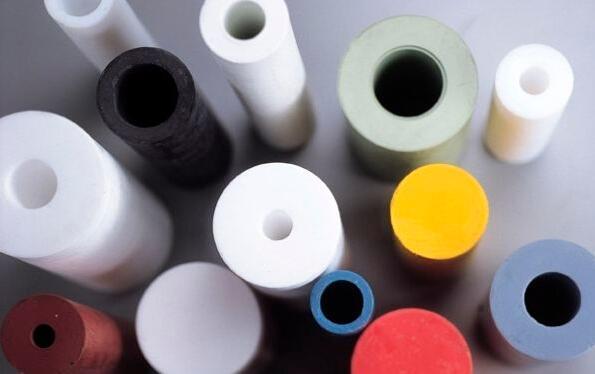PTFE’s significant chemical, temperature, moisture, and electrical resistances make it an ideal material whenever products, tools, and components need to be durable and reliable in even the most strenuous applications. On top of this, PTFE coated wire boasts unique low-temperature durability and fire resistance that make it a good choice for a constantly growing list of products, components, and applications.
Polyurethane (PUR and PU) is a polymer composed of organic units joined by carbamate (urethane) links. While most polyurethanes are thermosetting polymers that do not melt when heated, thermoplastic polyurethanes are also available.
Polyurethane polymers are traditionally and most commonly formed by reacting a di- or polyisocyanate with a polyol. Both the isocyanates and polyols used to make polyurethanes contain, on average, two or more functional groups per molecule

| Property Name | Units | ABS/Polyurethane Alloy | Acetal Copolymer, PTFE Filled |
|---|---|---|---|
| Specific Heat Capacity | BTU/lb-°F | 0.359 | |
| Shear Modulus | ksi | ||
| Compressive Yield Strength | psi | 5710 | |
| Poisson’s Ratio | |||
| Dielectric Constant | 3.7 | ||
| Dielectric Strength | kV/in | 467 | |
| Elongation at Break | % | 250 | 9.4 |
| Flexural Yield Strength | psi | 9820 | |
| Modulus of Elasticity | ksi | 63.8 | 348 |
| Hardness, Rockwell R | 110 | ||
| Tensile Strength, Ultimate | psi | 3860 | 6580 |
| Tensile Strength, Yield | psi | 3550 | 8270 |
| Electrical Resistivity | ohm-cm | 3.00e+15 | |
| Density | lb/in³ | 0.0397 | 0.0531 |
| Max Service Temperature, Air | °F | 130 | 212 |
| Thermal Conductivity | BTU-in/hr-ft²-°F | 1.32 | 1.67 |
| Fracture Toughness | ksi-in½ |
Post time: Dec-16-2017

